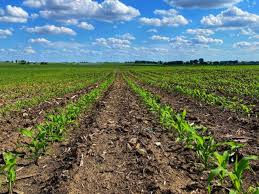Potential for Sustainable Energy on Abandoned Farmland
A battle often ensues over farmland in the struggle against climate change, as solar panels, energy crops, and food production compete over the land. Policies can unintentionally incentivize farmers to cultivate new lands, leading to the release of additional heat-trapping gases. That’s why sustainable plant-based fuel strategies often focus on marginal lands—those too difficult to cultivate or yielding poor profits.
A new tool developed by scientists at the University of Wisconsin–Madison aims to ease this tension. Researchers Yanhua Xie and Tyler Lark, along with their team at the Great Lakes Bioenergy Research Center, have used machine learning to map approximately 30 million acres of abandoned US cropland since the 1980s. This tool could help in decision-making regarding how to balance energy and food production.
Mapping Abandoned Farmland
Published in the Environmental Research Letters journal, the study offers a highly detailed map of previously cultivated land. The findings offer a field-level resolution of abandoned farmland, which could be used for farming crops like switchgrass or sorghum. These crops can trap carbon in the soil and serve as biofuel feedstocks and petrochemical substitutes.
“Understanding the location and characteristics of these lands can help us grasp their true potential for climate mitigation,” says Lark, a scientist at UW–Madison’s Center for Sustainability and the Global Environment. This insight could direct clean energy investments to areas where they would least interfere with other beneficial uses.
Land Use Change and Sustainable Energy
The study, a collaboration between researchers at UW–Madison and Michigan State University, was funded by the U.S. Department of Energy. The data are publicly available in the GLBRC’s interactive Atlas of Marginal Lands. This Atlas also maps trends in farmland expansion and irrigation.
Before this study, there was no way of knowing exactly where or when farmland was abandoned. “Most estimates have all been at the county level,” Lark explains. “This is really the highest resolution analysis available, looking directly at the landscape—field by field, acre by acre—of where these croplands are.”
Cloud Computing and Satellite Imagery
While satellite imagery has been available for decades, only recent advances in cloud computing have made it possible to categorize the nearly 2 billion acres of land in the coterminous US. To construct their analyses, Xie, now a professor at the University of Oklahoma, used existing land cover data to train a computer to read these images and recognize cultivation patterns.
The analyses can predict the precise location of abandoned croplands nine times out of 10 and can even pinpoint the year they were abandoned with about 65% accuracy.
Areas of Abandoned Cropland
The study found that over 30 million acres of cropland were abandoned over 32 years. The majority of this land was concentrated in the Great Plains and along the Mississippi River between southern Illinois and the Gulf of Mexico. Of the abandoned cropland, more than half became pasture or grassland, and roughly a third became shrubland, forest, wetland, or bare land.
Surprisingly, less than a fifth of the abandoned land was enrolled in a formal conservation program, such as the USDA’s Conservation Reserve Program. This implies that more land than previously assumed could potentially be used to grow bioenergy crops.
Future research will use these data to model how much biomass these lands could produce and their potential to trap atmospheric carbon dioxide in the soil. However, the study does not explain why the lands were abandoned. “The next step is to figure out the drivers,” Lark notes.
Original Story at news.wisc.edu
